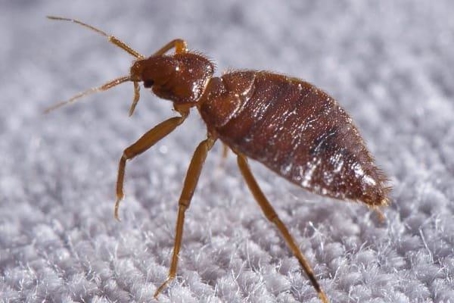Bed bugs can be hard to identify because they like to hide, and their bites are not immediately felt. While bed bugs do not spread specific diseases, people tend to scratch the bites. This can cause a secondary infection. Bed bugs can also disturb someone’s sleep by biting them or by causing the fear of being bitten. Because of this, they are considered a public health problem. It requires special equipment to get rid of them. This means a misidentification can be costly.
History Of Bed Bugs
Bed Bugs have been feeding off of humans since there were humans. It is thought that bed bugs were originally on bats that shared caves with humans. Fossils of bed bugs that are 3,500 years old have been found in the Middle East. Bed bugs spread like wildfire across the world. Europeans brought them to the United States. They were common until just after WWII when DDT was used to almost wipe them out in the developed world. They resurged in the mid-90s in the United States. The banning of DDT has made them very hard to get rid of now that they have reemerged.
Description Of Bed Bugs
Adult bed bugs are about the size and shape of an apple seed. They are flat until they feed, then are rotund. Adults are long and brown but become reddish-brown after feeding. They excrete a musty-sweet odor from glands on their sides.
Nymphs, or young bed bugs, are smaller than adults. They are white or translucent and if they have not fed recently, are really hard to see. When fed, they become reddish and are easier to see. The eggs are tiny about the size of a pinhead. They are white and if they are more than five days old, have an eyespot. Once the bed bug hatches, the spent shell is white or yellowish.
Lifecycle Of The Bed Bug
Adult female bed bugs can lay about 500 eggs in their lifetimes. Once the eggs are laid, they hatch into nymphs. Nymphs go through five molts on their way to becoming adults. They must have a blood meal before they can molt. Both male and female bed bugs require regular blood meals. The female cannot lay eggs until she has a blood meal. The whole cycle takes about a month, given access to hosts. While nymphs can go several months without a blood meal, they cannot molt until they have one. Adults can survive longer than nymphs without a blood meal.
Signs You Have Bed Bugs
Bed bugs are small, nocturnal, and good at hiding. You may see signs of them before you see them. Four general indicators show you have bed bugs.
- Reddish or rusty stains on linens, bed springs, and mattresses where bed bugs have been crushed.
- Small dark spots on your linens, bed springs, and mattresses. They may run on fabric like an ink pen mark.
- Eggs, eggshells, and shed skins that are pale yellow.
- Adult bed bugs
- Bed bugs will infest bedding, hide behind headboards, and spread throughout the house if not treated.
Get Help
Bed Bugs are not a DIY problem. You need special equipment to get rid of them. The Original Bugman Pest Elimination Inc. can help you get rid of your bed bugs. Contact us and we will schedule a free inspection. After the inspection, we will develop a treatment plan just for your house. Once the bed bugs are gone, we can come out quarterly to make sure they stay gone. Call The Original Bugman Pest Elimination Inc. today and get rid of those bed bugs.
Schedule Your Free Inspection
Complete the form below to schedule your no-obligation inspection.

